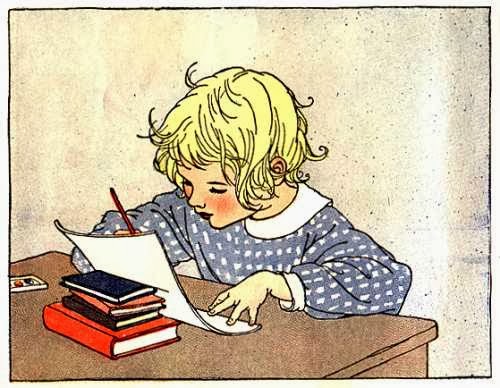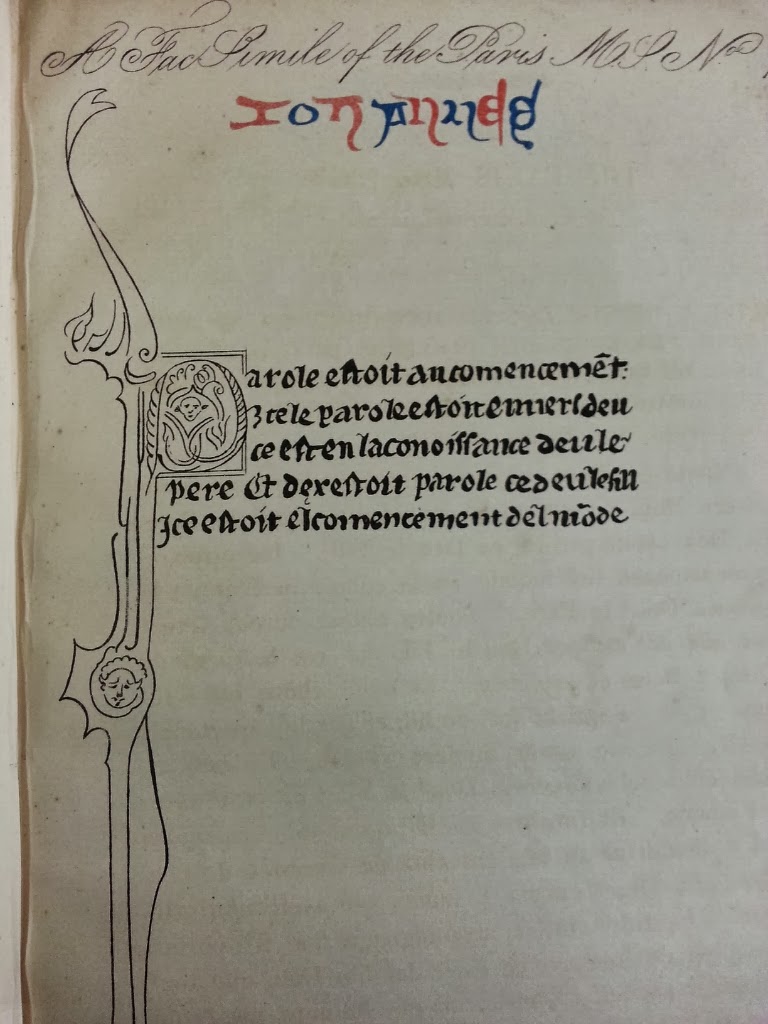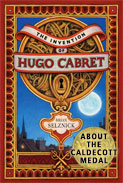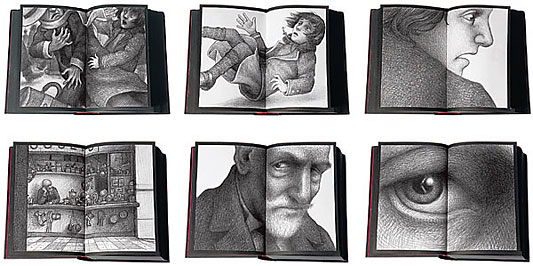The last book in the World Languages Bibles Collection at St. Olaf College, caught my eye, not for its outward beauty (it's plain and has been "mended")
but for the look of its language and that it says it was written in "Provencal". The text had almost a medieval Latin language look to it, but maybe a cross with Spanish or French. The word Romaunt seemed similar to Romance so I did some research to see what it was. Merriam-Webster says Romaunt is Middle English from the Old French romant, first known use in 1530 AD. Inside the front cover of this book is a typed paper explaining Romaunt and the text itself:
Here it says that Romaunt is Gallic (French) and that this was the first vernacular translation of the Gospel of John condemned by the Catholic Church, probably originally written in the 12th century. It seems like the Romaunt language was a common Romance language spoken in France in the region of Provence.
Now, this particular printed volume has a copyright date of 1848, as does the one at St. Olaf. A quick search online shows other libraries to hold the same version. The University of Chicago has copy # 8086 and you can read the whole book online! The page opposite the title page has written, in beautiful script, "A FacSimile of the Paris MS No 8086". The copy at St. Olaf says it is No.7268. So in 1848 there must have been a huge print run of these. Here is a not great photo of the text, but you can see the pretty hand drawn script and doodles. There are a few more of these throughout the book, and in color, well, red and blue ink.
but for the look of its language and that it says it was written in "Provencal". The text had almost a medieval Latin language look to it, but maybe a cross with Spanish or French. The word Romaunt seemed similar to Romance so I did some research to see what it was. Merriam-Webster says Romaunt is Middle English from the Old French romant, first known use in 1530 AD. Inside the front cover of this book is a typed paper explaining Romaunt and the text itself:
Here it says that Romaunt is Gallic (French) and that this was the first vernacular translation of the Gospel of John condemned by the Catholic Church, probably originally written in the 12th century. It seems like the Romaunt language was a common Romance language spoken in France in the region of Provence.
Now, this particular printed volume has a copyright date of 1848, as does the one at St. Olaf. A quick search online shows other libraries to hold the same version. The University of Chicago has copy # 8086 and you can read the whole book online! The page opposite the title page has written, in beautiful script, "A FacSimile of the Paris MS No 8086". The copy at St. Olaf says it is No.7268. So in 1848 there must have been a huge print run of these. Here is a not great photo of the text, but you can see the pretty hand drawn script and doodles. There are a few more of these throughout the book, and in color, well, red and blue ink.
One more point of interest from that typed sheet inside the cover is that it mentions the Waldenses, "the only dissenters from the Catholic church in the middle ages that continue to live". So, who were the Waldenses? A quick search at Encyclopaedia Brittanica gave me quite a bit of information about them. Basically, they began as a sect in southern France that aspired to follow Christ in poverty and simplicity. Followers of this church wanted to be able to read the Bible in their vernacular tongue, and so it was translated into Romaunt. Here is another interesting text about the Waldenses, written by


































